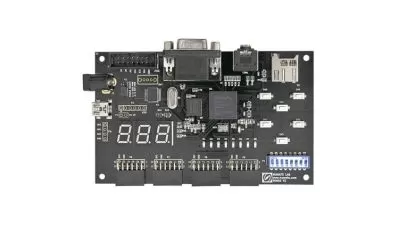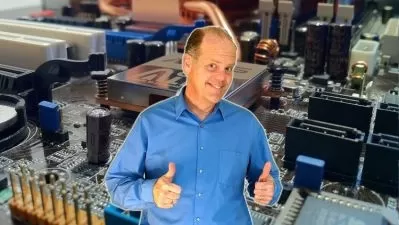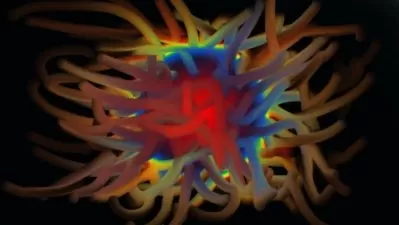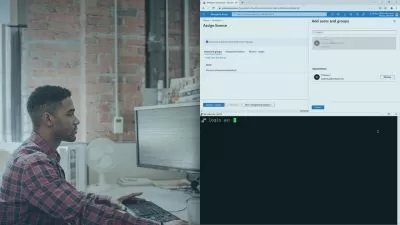Advanced Computer Architecture & Organization: HD Course
Noor Uddin
4:28:16
Description
Learn Computer Architecture, Computer Organization, ISA, CPU Design, CISC & RISC Architectue, Pipelining, I/O & more.
What You'll Learn?
- Computer Architecture
- Computer Organization
- Instruction Set Architecture
- CPU Design
- Memory Management
- Control Unit Design
- SRC processor
- CISC and RISC architecture
- Pipe lining
- Parallel programming
- Input/Output Sub Sytems
- Registers
Who is this for?
What You Need to Know?
More details
DescriptionCourse Overview
This course provides a comprehensive overview of Computer Architecture and Organization from a practical perspective.
This course includes video and text explanations particular covers everything from Computer Architecture and Computer Organization. This course consists of different sections: each section covers a specific module related to computer architecture.
What Is Computer Architecture?
Computer architecture is a science or a set of rules stating how computer software standards and hardware instructions and technology infrastructure are joined together and interact to make a computer work. It defines how computer systems, platforms and programs operate. In other words, computer architecture defines system’s functionality, design, and performance. Creating a computer’s architecture requires IT professionals to first determine the needs of users, technology limitations and process requirements.
What Does This Course Cover?
This computer architecture and computer organization course covers all the following necessary topics and areas that a computer architect must understands.
Instruction Set Architecture (ISA).
CPU design.
Classification of Machines CPU on the basis of operand and result location.
RISC and CISC architecture.
Different addressing modes in machines.
Control Unit design
Pipe lining.
Memory Hierarchy.
Registers Organization.
SRC Processor.
Computer Organization
FALCON-A Processor.
Input/Output Sub systems
Interrupts.
Who Is the Course For?
This course is for:
Computer Science Students.
System Programmer.
Machine Level Language Programmer.
Assembly Language programmer.
Computer Architects.
Any body who wish to learn how computer systems work?
Computer Engineers.
Electronics Engineers.
Compiler Writers.
Keywords:
Computer Architecture
Computer Organization
Who this course is for:
- Computer Science Students
- Computer Architects
- System Programmers
- Assembly Language programmers
- Computer Engineers
- Electronics Engineers
- Any body who wish to learn how deos computer systems works?
Course Overview
This course provides a comprehensive overview of Computer Architecture and Organization from a practical perspective.
This course includes video and text explanations particular covers everything from Computer Architecture and Computer Organization. This course consists of different sections: each section covers a specific module related to computer architecture.
What Is Computer Architecture?
Computer architecture is a science or a set of rules stating how computer software standards and hardware instructions and technology infrastructure are joined together and interact to make a computer work. It defines how computer systems, platforms and programs operate. In other words, computer architecture defines system’s functionality, design, and performance. Creating a computer’s architecture requires IT professionals to first determine the needs of users, technology limitations and process requirements.
What Does This Course Cover?
This computer architecture and computer organization course covers all the following necessary topics and areas that a computer architect must understands.
Instruction Set Architecture (ISA).
CPU design.
Classification of Machines CPU on the basis of operand and result location.
RISC and CISC architecture.
Different addressing modes in machines.
Control Unit design
Pipe lining.
Memory Hierarchy.
Registers Organization.
SRC Processor.
Computer Organization
FALCON-A Processor.
Input/Output Sub systems
Interrupts.
Who Is the Course For?
This course is for:
Computer Science Students.
System Programmer.
Machine Level Language Programmer.
Assembly Language programmer.
Computer Architects.
Any body who wish to learn how computer systems work?
Computer Engineers.
Electronics Engineers.
Compiler Writers.
Keywords:
Computer Architecture
Computer Organization
Who this course is for:
- Computer Science Students
- Computer Architects
- System Programmers
- Assembly Language programmers
- Computer Engineers
- Electronics Engineers
- Any body who wish to learn how deos computer systems works?
User Reviews
Rating
Noor Uddin
Instructor's Courses
Udemy
View courses Udemy- language english
- Training sessions 38
- duration 4:28:16
- Release Date 2024/06/20

















